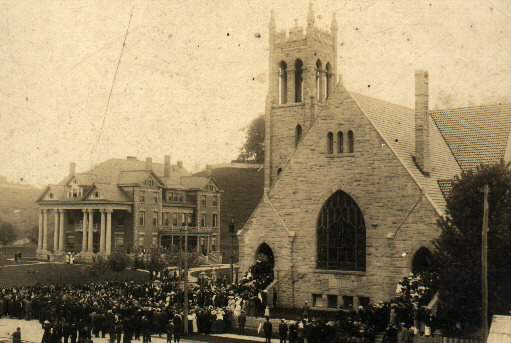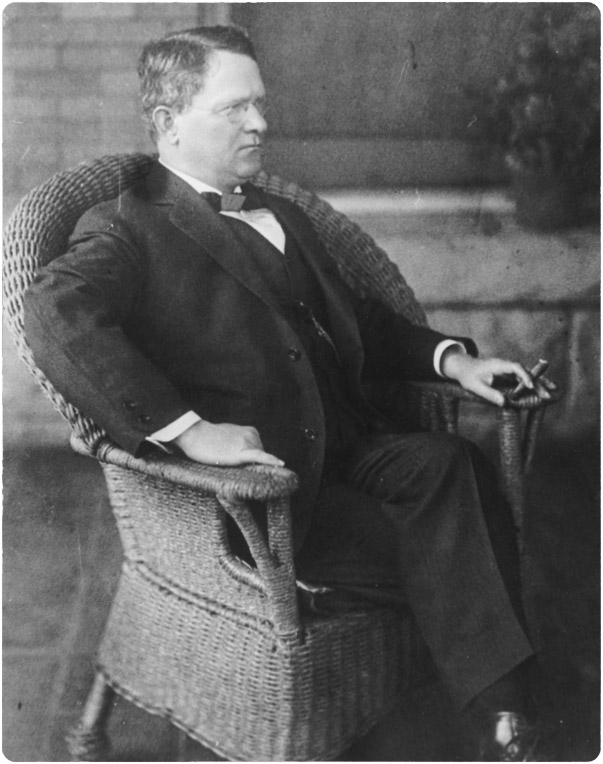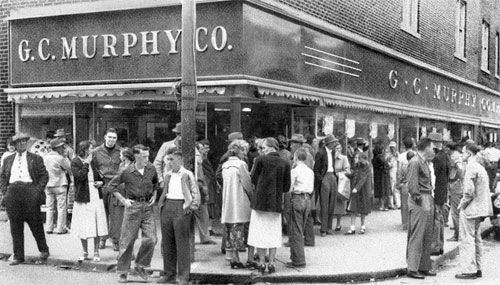
On February 24, 1984, the City of Paintsville celebrated its 150th Anniversary as a chartered city in the Commonwealth of Kentucky.
Although Paintsville was a small village, then located in Floyd County (Johnson County was not formed until 1843), the town had its beginnings much earlier than the year it received its charter. As early as 1780, what is now Paintsville was referred to in military dispatches of the American Revolution by two colonial officers scouting the area.
Because of its location at the confluence of the Big Sandy River and Paint Creek, Paintsville was first called Paint Lick Station and/or Paint Landing by the early settlers and visitors to this area. The first post office was established in 1824 and is listed in the National Archives as Paint Creek Post Office. The name was not formally changed to Paintsville by the U. S. Postal Service until June 21, 1843.
There have been many stories about how the names Paintsville and Paint Creek were attached to the village and the small stream which ran beside it and which now bisects it.
Some would have Daniel Boone involved. Others attribute the name to such early explorers and frontiersmen as Dr. Thomas Walker and Matthias Harmon.
Whichever is true, the names were clearly derived from the colorful Indian markings on the numerous white birch trees and rocks which lined the banks of Paint Creek. These early Indian ideographs gave evidence of frequent Indian visits to the junction of our two waterways. Indeed, archeological discoveries have confirmed that the Adena Indians, mound builders by tradition, were in the Paintsville area centuries before the discovery of North America by white men.
Although nomadic tribes of Indians from what is now Ohio and Tennessee made life hazardous along the Big Sandy River until the dawn of the 19th Century, by the time Paint Lick Station was established as a permanent village, Indian threats were no longer a problem.
As J. K. Wells observed so eloquently in his volume entitled The Gathering of Trades People, 1992, “It is difficult to pinpoint that hour at which a boy becomes a man or a group of buildings become a town. Certainly, in each instance the process is slow and gradual and the line to be crossed is ill defined. It was in the 1810s that the first homes were built on the site of present day Paintsville and in the 1820s that the bottom land was subdivided and laid off in lots.”
Among the first settlers and property owners in what is now Paintsville were the Preston, Remy (Ramey), Dixon (Dickson), Huff, Franklin and Auxier families. These were soon joined by such names as Hager, Vaughan, Castle, VanHoose, Stafford and others.
As the names indicate, most of the families were of Scotch-Irish, English or German extraction. Many had fought in the late Revolutionary War and migrated from North Carolina, Virginia and Pennsylvania to the sheltering hills of eastern Kentucky.
Paintsville, like many small mountain villages, struggled along for its first 25 years.
There were no roads or highways. Communication with the outside world was very limited. Mail arrived by horseback and steamboat. Eventually, stage coaches ran from the Bluegrass. Travel was restricted to horseback and even then the horses stepped along creek beds and Indian paths.
The first steamboat traveled up the Big Sandy to Paintsville and beyond in 1837. It was the most exciting transition in the area’s history. For the next 75 years, steamboats were a common and welcome sight along the banks of the Big Sandy River.
Just as Paintsville began to thrive as a commercial center, the onset of the Civil War in 1860 began to take its toll. As in other border states, brother was set against brother and families were torn by the deep emotional and political issues of the day.
At one point, the Johnson County Fiscal Court passed an ordinance that neither the United States nor the Confederate States flags could be flown in the county. When Colonel James A. Garfield and his Union Brigade marched on Paintsville in January of 1862, this law was quickly repealed and a new one passed which permitted only the Union flag to be flown at the Courthouse.
Garfield, a young lawyer soon to be an Ohio congressman and later President of the United States, routed Confederate forces camped in Paintsville and along the Big Sandy River, defeating the forces under General Humphrey Marshall at the Battle of Middle Creek in nearby Floyd County.
What made the Civil War even worse for the residents of Johnson County was the fact that not only was Kentucky a border state but Johnson County was a border county.
Floyd County to the south was generally Southern in its sympathies while Lawrence County to the north was pro-Union. It is not surprising to learn, therefore, that General Daniel Hager, Johnson County’s first sheriff and an officer in the Kentucky Militia, had one son in Confederate service and another in the Union Kentucky 14th Volunteer Mounted Infantry. More significantly, it was learned much later that the elder Hager had joined the forces of General Marshall as a supply officer and spent the balance of the war in Virginia. His many relatives and friends in Johnson County thought he had retired to his Hager Hill farm.
Although emotions remained raw and tempers frequently flared, Paintsville and Johnson County joined the nation in recovering from the terrible effects of the War Between The States.
Doctors, lawyers and teachers had been present in Johnson County since soon after Paintsville’s chartering. One of the more prominent teachers was a young man from Floyd County named Thomas Jefferson Mayo. Mayo moved to Paintsville soon after the Civil War and established a reputation as a gifted and talented teacher. He was to become far more famous as the father of John C. C. Mayo, the aggressive visionary and entrepreneur who opened the coal field of eastern Kentucky to the industrial north and single-handedly brought railroad service to the region.
Without the life and work of John C. C. Mayo Paintsville, its banks and churches, its streets and public utilities would have been many years later in arriving.
On September 1, 1904, the Chesapeake and Ohio Railway opened its Paintsville depot. It had taken more than 25 years for the rails to travel 18 miles from Richardson in Lawrence County to Paintsville. Mayo, and the coal he made available, was totally responsible.
Coal had become an important potential resource for eastern Kentucky since before the Civil War. But the war had interrupted its development and dried up the necessary financing. John C. C. Mayo had the vision and the tenacity to make coal king in the mountains.
By 1910 tens of thousands of tons of coal were pouring out of eastern Kentucky.
Mayo was a millionaire, a political titan and eastern Kentucky’s only member of the Democratic National Committee. He was influential in electing governors, senators and congressmen and contributed heavily to the presidential campaign of Woodrow Wilson in 1912. It was said of Mayo that he was “a teacher from the hills of eastern Kentucky who elected a West Virginia Senator from Maryland.” This was in reference to the election of Clarence Watson, a native of Maryland, to the United States Senate from West Virginia. The description was, by all accounts, true.
With the coming of coal and rail service Paintsville truly came into its own.
In 1901 The Paintsville Herald ran its first issue. It is today the oldest continuous business in Paintsville. In 1902, Paintsville’s first bank opened for business. In 1906, the remarkable invention of Alexander Graham Bell revolutionized communications in Paintsville as three full time operators responded to the rings of 26 telephones. By 1908 Paintsville had paved streets. 1905 saw the first vehicular bridge across Paint Creek, connecting the two of the major sections of what is now the City of Paintsville. 1912 brought natural gas and electrical service and in 1926 the city had full public water service and its first official fire department.
The first county fair was held in 1914 and the first Apple King was named in that year. But it was not until 1962 that the Johnson County Kentucky Apple Festival was held.
In the intervening years, Paintsville has continued to maintain its base as a center of commercial, professional, legal, medical, financial and transportation interests in the Big Sandy Valley. It has grown from less than 200 people in 1860 to nearly 5000. Its boundaries have expanded 9 times since 1834.
Most important, Paintsville and Johnson County have produced a greater proportion of physicians, lawyers, teachers, scientists, military leaders, outstanding athletes, businessmen and public servants than most towns of its size could ever boast. The same character traits which made this fact possible made Paintsville a reality and have kept it in the forefront of progress and development in eastern Kentucky.

A photo of John C.C. Mayo (1864-1914), who became wealthy using his teaching salary to purchase broad form deeds early in the coal boom, eventually founding the Northern Coal & Coke Company (1897), among other businesses. His investments left him the largest landholder & wealthiest man in Kentucky upon his death. 1912
This image is from the Anne and Harry M. Caudill Photographic Collection, located at the University of Kentucky. The collectors were Anne Caudill and Harry M. Caudill (1922-1990).
Click on the picture above to read about the history of the G.C. Murphy Co.

